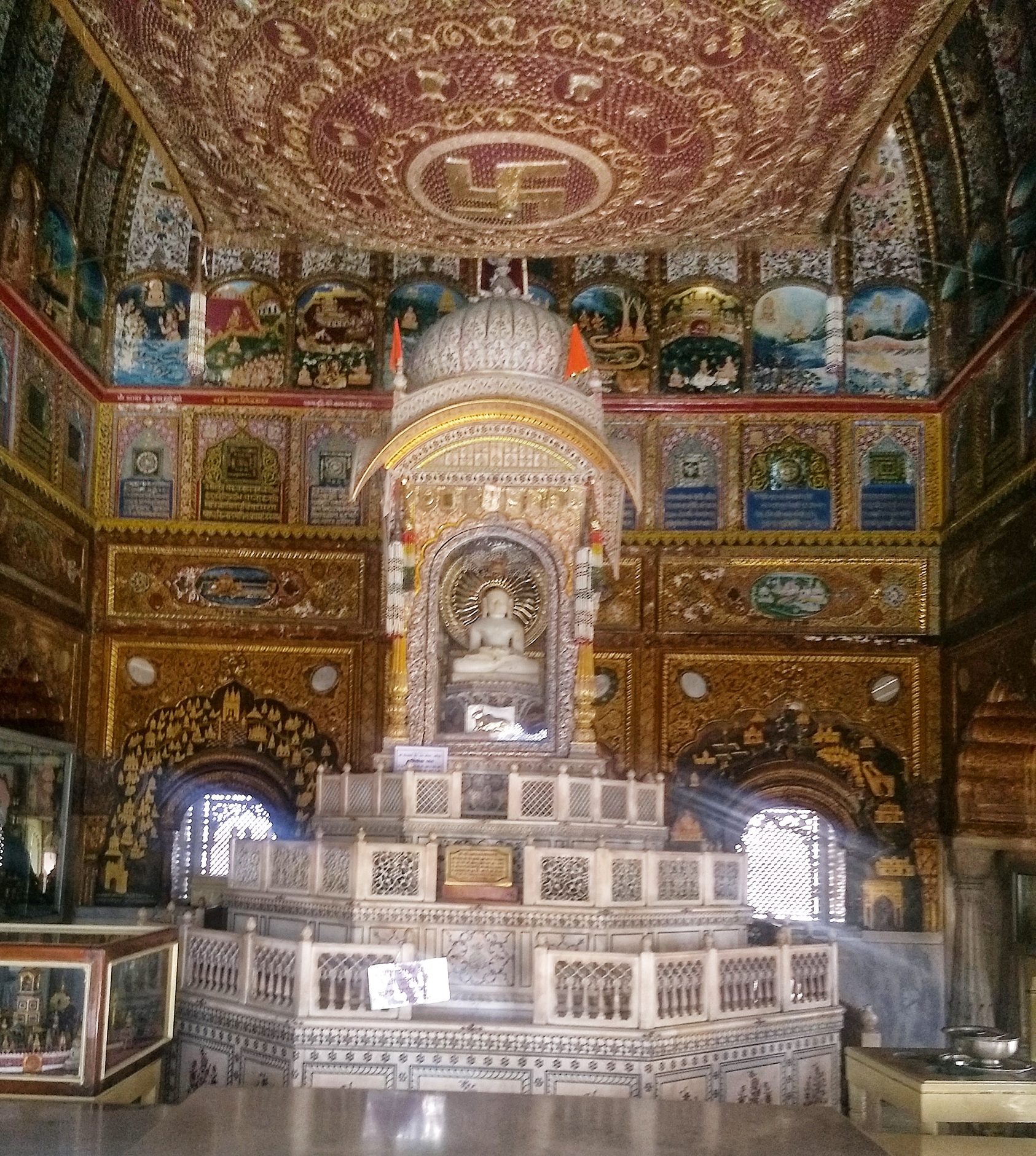About g_translate Show Original
History of Shri Digambar Jain Naya Mandir Ji Dharmapura, Chandni Chowk, Delhi-6
`````````````````` ````````````````````` br /> This two-storey temple is a temple of thirteen cults of pure Amnaya. At the end of the Mughal period, the royal treasurer Lala Harsukh Rai built a huge and ornate Digambar Jain temple, which is known as Shri Digambar Jain Naya Mandir. The construction of the temple started in Vikram Samvat 1857 (A.D. 1800) and it was established in Vaishakh Sudi 3rd Vikram Samvat 1864 (A.D. 1807). Its construction work was completed in 7 years. This temple is an excellent example of workmanship. It is entered through a very decorated door. There is a circular dome in the main hall of the temple. Excellent frescoes are made on the pillars of the hall.
attribute
There is no light of any kind in the building of this temple, and the lamp does not light up, in the building of this temple, all religious works like consecration, worship etc. are done in the light of the sun. This temple does not open in the evening.
Eight lakh rupees were spent on its construction during that period. The original altar of the temple is made of marble from Makrana. The idol of Moolnayak Bhagwan Adinath (Vikram Samvat 1664) is seated in a 10 feet high marble altar. The cost of the Kamalasana on which this statue is situated is said to be ten thousand rupees and the cost of the altar is said to be one and a half lakh rupees. Under the lotus there are pairs of four lions in marble stone facing all the four directions. The fine workmanship of the hair of his mustache is visible. In the altar, the mosaic of precious stones and the unique ornamentation of bell-boots has been done so artfully and finely, to see which many artists from the country and abroad keep coming and are surprised to see it. The walls around the altar are adorned with artistic gold-plated paintings depicting Jain stories.
Firstly there was an altar in this temple. Later an altar was built for the idols which were protected during the Ghadar period. Later, two more altars were built in the hallway to the right and left of the original altar. In these altars there are statues of sapphire turquoise and stone of Vikram Samvat 1112. An umbrella is made of crystal. This is the first Shikhar closed temple of Delhi. The builder of this temple, Lala Harsukh Raiji had taken special permission from the emperor for the summit. Then the summit was possible.
There are 49 statues in the last altar. On the left is a three-sided black stone statue. It has a Padmasana and a Khadgasana statue on two sides. The above article is as follows-- Samvat 153 Magh Shukla 10 Chandra. On the other hand it is the same article. According to archaeologists, this should be the year 1253. On the right side of the same altar, there is a three-sided slab of similar stone. There is a small peak on top of it. It has the Padmasan Tirthankara statue in the middle. Here and there is a Khadgasana idol on both the sides. The trunk of an elephant remains on the Padmasan idol on the right. It is said that both these rock plates were brought from Mehrauli, there probably was a Jain temple in ancient times. On this altar there is a Khadgasan idol of Samvat 1123. It is a dark brown 1 foot undercarriage.
In addition to the altars, there is a modern Sahasrakuta Chaityalaya in the room. In whose four directions 1008 statues are engraved on a rock.
A series of monthly rituals is going on in the temple courtyard for about 15 years.
There are 24 doors (gates) in the courtyard of the temple, on these 24 doors Curtains with names and symbols of twenty four Tirthankaras are put up.
There is also a scriptures store in this temple, the collection of scriptures is beautiful, and there is also a silver sutra. Along with the temple, there is Dharamsala, Shishu Sadan, Primary School, Girls' School. Vardhman Jain Library, run by Jain Mitra-Mandal, is also here.
The new temple book collection includes a rare illustrated manuscript of Acharya Jinsena's Maha-Purana. This 1420 manuscript is a rare surviving example of Jain (and Indian) art from the early 15th century.
fmd_good 2515, Dharampura, Chandni Chowk, Delhi, 110006
account_balance Digamber Temple
Follow us on
Programs
temple time
Morning: 5:30 AM - 11:30 AM

